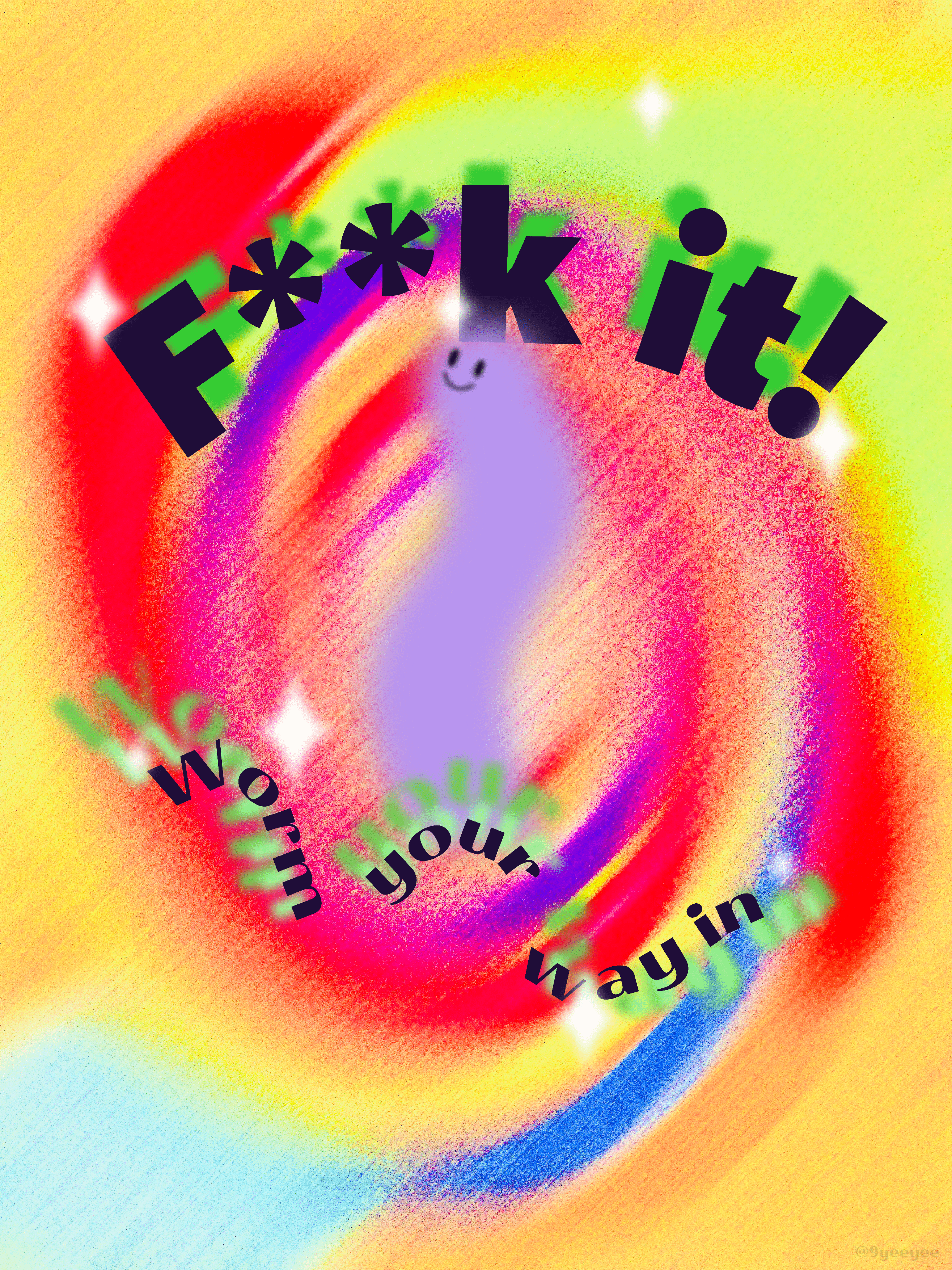Tok Tok

Hyeyeong Kim, who likes to use different types of mediums, decided to talk to Jordi Ng.
Jordi Ng is a designer who is interested in trying new things and experimenting with new methods.
She is a self-taught designer, illustrator, and art director based in Brooklyn, New York. She often works with books, publications, and other printed material. Initially graduating in political science and economics at UCLA, Ng decided to pursue a career in design after her internships with design studios in L.A. and Singapore.
조디 응 은 뉴욕 브루클린에 기반을 둔 독학한 디자이너, 일러스트레이터, 그리고 아트 디렉터다. 그녀는 종종 책, 출판물, 그리고 다른 인쇄물을 가지고 일한다. UCLA에서 정치학과 경제학을 처음 졸업한 응 작가님은 L.A.와 싱가포르의 디자인 스튜디오에서 인턴십을 한 후 디자인 분야에서 경력을 쌓기로 결정했다
What are some important things for a young designer to consider when making their portfolio?
젊은 디자이너가 포트폴리오 만들 때 고려해야 할 중요한 것을 무엇입니까?
Consider your desired audience — what is your dream client/studio, and what kind of projects do you want to be hired to do? Most of the time, clients and companies are risk-averse and they want to hire designers that they know that can do the kind of projects they usually do. So just as a quick example, if your dream client is to work for a newspaper or magazine, it doesn’t hurt to make your portfolio lean towards print projects, even if they’re mostly self-initiated and aren’t “real” projects. A lot of students get scared that they don’t have “real” projects or job experience to show — that’s fine, just make your own projects, and document them. It’s the surest way to worm your way into a real job involving those sorts of projects. If you do it, they will come.
원하는 고객을 고려해 보십시오. 꿈의 고객/스튜디오는 무엇이며, 고용되어 어떤 종류의 프로젝트를 수행하고 싶으십니까? 대부분의 경우, 고객과 회사는 위험을 회피하며, 그들이 평소에 하던 종류의 프로젝트를 할 수 있는 디자이너를 고용하고 싶어합니다. 간단한 예로, 여러분의 꿈의 고객이 신문이나 잡지사에서 일하는 것이라면, 비록 그것들이 대부분 자기 주도적이고 "실제" 프로젝트가 아니더라도, 여러분의 포트폴리오를 인쇄 프로젝트로 기울이는 것은 해롭지 않습니다. 많은 학생들이 보여줄 "진짜" 프로젝트나 직업 경험이 없다는 것에 겁을 먹지만 괜찮습니다. 프로젝트를 직접 만들고 문서화하십시오. 그것은 그런 종류의 프로젝트를 포함하는 실제 직업으로 가는 가장 확실한 방법입니다. 만약 그것을 한다면, 클라이언트들이 올 것입니다.
How did you decide your career path?
진로를 어떻게 정하셨나요?
I studied political philosophy in college. I loved studying it but couldn’t see myself in any sort of job that involved politics. I got involved with a bunch of arts and design organizations on campus and quickly realized that was what I wanted to do for a living.
저는 대학에서 정치 철학을 공부했습니다. 그것을 공부하는 것을 좋아했지만 정치와 관련된 어떤 종류의 직업에서도 제 미래를 볼 수 없었습니다. 저는 캠퍼스에서 많은 예술과 디자인 단체들과 어울렸고, 그것이 제가 생계를 위해 하고 싶은 일이라는 것을 금방 깨닫았습니다.
How did you get started in your first job after school?
졸업 후 첫 직장은 어떻게 시작하셨나요?
I applied to a bunch of studios in New York City with my portfolio that was mostly composed of self-initiated projects since I didn't have a traditional design school portfolio. My first gig ever was as a freelance designer for &Walsh. That was how I got my foot in the door!
뉴욕에 있는 스튜디오에 많이 지원했습니다. 전통적인 디자인 학교 포트폴리오가 없었기 때문에 대부분 자기 주도적인 프로젝트로 구성된 포트폴리오를 가지고 있었습니다. 제 첫 번째 직업은 &Walsh의 프리랜서 디자이너였습니다. 그래서 문에 발을 들여놓았어요!
How were you able to find your style?
디자인 스타일을 어떻게 찾을 수 있었나요?
I don't know if I really have a style! I love trying new things and experimenting with new methods. As an art director, I'm also very open to collaborating with artists of various different styles.
스타일이 있는지 모르겠네요. 저는 새로운 것을 시도하고, 새로운 방법을 실험하는 것을 좋아합니다. 예술 감독으로서, 저는 또한 다양한 스타일의 예술가들과 협업하는 것에 매우 개방적입니다.
What is important for a designer to consider when establishing their career path?
디자이너가 진로를 설정할 때 고려해야 할 중요한 것은 무엇입니까?
Stay focused on yourself and try to ignore any outside noise or comparing yourself to your peers. Try to hone in on what exactly excites you most about design and try to find ways of incorporating those parts that excite you into your career. It doesn't have to be in the form of a full-time job either, if it's something independent on the side that you like to do, then find a job that is able to financially support you while you chase down the things that make you happy.
자신에게 집중하고 외부 소음을 무시하거나, 다른 사람들과 비교하지 않도록 노력하세요. 디자인에 대해 여러분이 가장 흥미를 느끼는 것이 무엇인지 알아보고, 흥분 시키는 부분들을 직업에 통합하는 방법을 찾도록 노력하세요. 정규직의 형태일 필요도 없고, 좋아하는 쪽에서 독립적인 일이라면, 행복하게 하는 것들을 추구하면서, 재정적으로 지원할 수 있는 직업을 찾으세요.
Looking back to when you graduated from school, what's one thing you know now that you wish you knew then?
졸업했을 때를 돌아보면, 작가님이 지금 알고 있는 한 가지 사실이 무엇인가요?
The importance of networking is far overblown.
네트워킹의 중요성은 매우 과장되어 있습니다.
When you were a student, how did you find inspiration with your own work? How did you get through burnouts or artblocks?
학생이었을 때, 어떻게 작품에서 영감을 찾았나요? 번아웃이나 아트블록을 어떻게 극복하셨나요?
I didn't have a traditional design school education, but I do suffer from a lot of burnout and occasionally creative blocks now. When that happens, I try to just give myself space and keep myself from thinking about the project 24/7. The idea usually comes to me after a bit, naturally.
저는 전통적인 디자인 학교 교육을 받지 못했지만, 지금은 많은 번아웃과 때때로 아트블록으로 고통받고 있습니다. 그럴 때면, 저는 제 자신에게 공간을 주고 프로젝트에 대해 24시간 내내 생각하지 않으려고 노력합니다. 그 생각은 보통 잠시 후에 자연스럽게 떠오릅니다.
And finally, serif or sans serif?
그리고 마지막으로, 어떤 것을 선호하시나요? 세리프? 산세리프?
Lol both
둘 다 선호합니다. (웃음)

